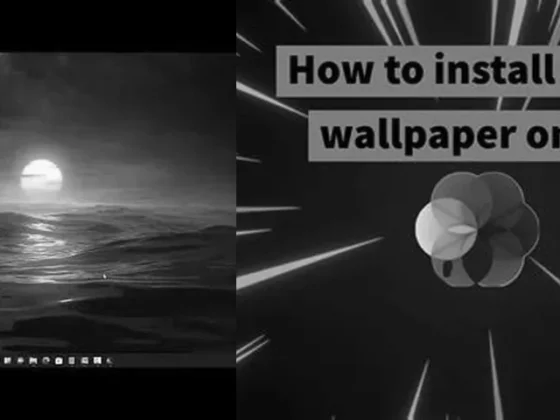How to Connect Your Phone to Your Computer Wirelessly: A Comprehensive Guide: Are you tired of constantly fumbling with cables and cords just to connect your phone to your computer? Well, fret no more because in this blog post, we’re going to show you how to connect your phone to your computer wirelessly, without all the hassle. Whether you need to transfer files, sync your devices, or simply mirror your phone’s screen, we’ve got you covered. So sit back, relax, and get ready to discover the wonders of wireless connectivity. Let’s dive in and untangle the web of wires together!
Setting Up a Wireless Connection Between Your Phone and Computer
Wireless technology has simplified the way we connect devices, and pairing your phone with your computer is no exception. Whether you’re looking to transfer files, manage messages, or just cast your phone’s screen, establishing a wireless connection is convenient and efficient. Below are the steps to get you started.
Step 1: Enabling Bluetooth on Both Devices
Bluetooth technology is often the backbone of wireless connections between phones and computers. To begin the process, ensure that Bluetooth is active on both your Android device and your computer. This can usually be done through the settings menu on each device.
- Navigate to the ‘Settings’ menu on your Android device.
- Locate and select ‘Bluetooth’ to turn it on.
- Repeat the process on your computer by going to ‘Settings’ > ‘Devices’ > ‘Bluetooth & other devices’.
- Toggle the Bluetooth switch to the ‘On’ position.
Step 2: Pairing Your Android Device with Your Computer
Once Bluetooth is enabled on both devices, they are ready to be paired. Your computer should appear as an available device on your Android’s Bluetooth settings page. Selecting your computer will initiate the pairing process.
- On your Android device, under ‘Available devices’, tap on your computer’s name.
- A pair code will then be displayed on both your Android device and computer. Ensure that the codes match.
- Confirm the pair code on both devices to establish a secure connection.
Step 3: Downloading Necessary Applications
For a more seamless experience, certain applications can facilitate the connection between your phone and computer. The Link to Windows app serves this purpose and can be downloaded by visiting aka.ms/yourpc on your Android’s browser.
- If you have a selected Samsung device, you may find that ‘Link to Windows’ is pre-installed.
- For other devices, simply download the app from the provided link.
- On your PC, navigate to aka.ms/linkphone in your browser to download the companion application.
Step 4: Linking Devices with QR Code
After installing the necessary applications, use the Link to Windows app’s camera feature to scan the QR code displayed on your PC. This will establish a connection between your Android device and computer.
- Open the Link to Windows app on your Android device.
- Select ‘Link your phone and PC’.
- Scan the QR code shown on your computer’s screen using your Android device’s camera.
Step 5: Granting Permissions for Device Access
To fully utilize the connection, your devices will need to exchange certain permissions. This enables your PC to access content from your phone, such as messages, photos, and other files.
- You’ll be prompted to give permissions such as access to contacts, messages, and files on your phone.
- Review each permission and select ‘Allow’ to enable functionality.
Advanced Wireless Connections & Features
Once paired, your Android device and computer can communicate wirelessly, offering a range of features and applications to enhance productivity and streamline your digital life.
Managing Files and Notifications
With your devices now linked, you can easily drag and drop files between them without the need for a USB cable. Notifications from your phone can also pop up on your computer, allowing you to stay informed without constantly checking your mobile device.
Using Your Phone App on Windows
Windows users can take advantage of the ‘Your Phone’ app, which mirrors many of your phone’s features on your PC. This includes making calls, sending texts, and accessing mobile apps directly from your computer.
Screen Mirroring and Streaming
Screen mirroring is another practical feature that wireless connections offer. You can project your phone’s screen onto your computer for presentations, gaming, or media streaming, providing a larger canvas for your mobile content.
Troubleshooting Common Issues
As with any technology, you may encounter hiccups when trying to establish a wireless connection. Here are some tips to troubleshoot common issues.
Bluetooth Pairing Problems
If you’re having trouble pairing your devices, try the following:
- Ensure that both devices are in discovery mode and within close proximity to each other.
- Restart the Bluetooth service on both devices.
- Remove any previous pairings and attempt to pair the devices again.
Application Connectivity Issues
In case the Link to Windows app isn’t functioning properly:
- Check for updates to the app on both your phone and computer.
- Ensure that your devices are on the same Wi-Fi network.
- Restart both devices and attempt to link them once more.
Permission Denials
If permissions are denied or not functioning:
- Go back to your device’s settings and manually enable the permissions for the Link to Windows app.
- If issues persist, reinstall the app and go through the permission process again.
Enhancing Your Wireless Connection
With your phone now wirelessly connected to your computer, you can explore additional features and settings to optimize the experience.
Customizing Settings for Efficiency
Adjust the settings within the Link to Windows app to tailor the experience to your needs. You can choose which notifications to receive, how files are transferred, and the quality of screen mirroring.
Exploring Third-Party Apps
While the Link to Windows app offers a robust set of features, third-party apps can provide alternative or additional functionalities. Explore the app store for tools that might better suit your workflow or preferences.
Maximizing Battery Life
Wireless connections can be power-intensive. To maximize battery life, disconnect the pairing when not in use, adjust the settings for lower power consumption, and monitor your devices’ battery health.
Conclusion
Connecting your phone to your computer wirelessly is not just about convenience; it’s about creating a seamless interaction between your most used devices. By following the above steps and tips, you can enhance your productivity and enjoy the benefits of a connected digital ecosystem.
Remember to keep both your phone and computer updated to the latest software versions for the best performance and security. Happy connecting!
FAQ & Related Questions about How Do I Connect My Phone To My Computer Wirelessly?
Q: How do I connect my phone to my computer wirelessly?
A: To connect your phone to your computer wirelessly, make sure Bluetooth is turned on for both your Android device and your computer. Then, tap on the computer’s name when it appears as an available device to pair with on your Android device.
Q: Can I connect my phone to my computer without using a USB cable?
A: Yes, you can connect your phone to your computer without a USB cable. Turn on Bluetooth on both your PC and your Android smartphone. Then, go to the Bluetooth settings on your computer and search for your phone. Once your phone appears in the list of found devices, select it to establish a wireless connection.
Q: How do I pair my smartphone with my computer?
A: To pair your smartphone with your computer, open a browser on your PC and go to aka.ms/linkphone. Use the companion app’s camera on your smartphone to scan the QR code displayed on your PC. This will link your devices. You may be prompted to grant certain permissions to access content from your phone on your PC.
Q: What should I do if my computer does not show up as an available device on my Android phone?
A: If your computer does not appear as an available device on your Android phone, make sure that Bluetooth is enabled on both devices. Additionally, ensure that both devices are within close proximity to each other. If the issue persists, try restarting both your phone and computer, and then attempt the pairing process again.
Q: Can I connect an iPhone to my computer wirelessly?
A: Yes, you can connect an iPhone to your computer wirelessly. However, the process may differ from connecting an Android phone. iPhones typically use a feature called AirDrop or iCloud to establish a wireless connection with a computer. Consult the Apple support website or your iPhone’s user manual for specific instructions on how to connect your iPhone to your computer wirelessly.


